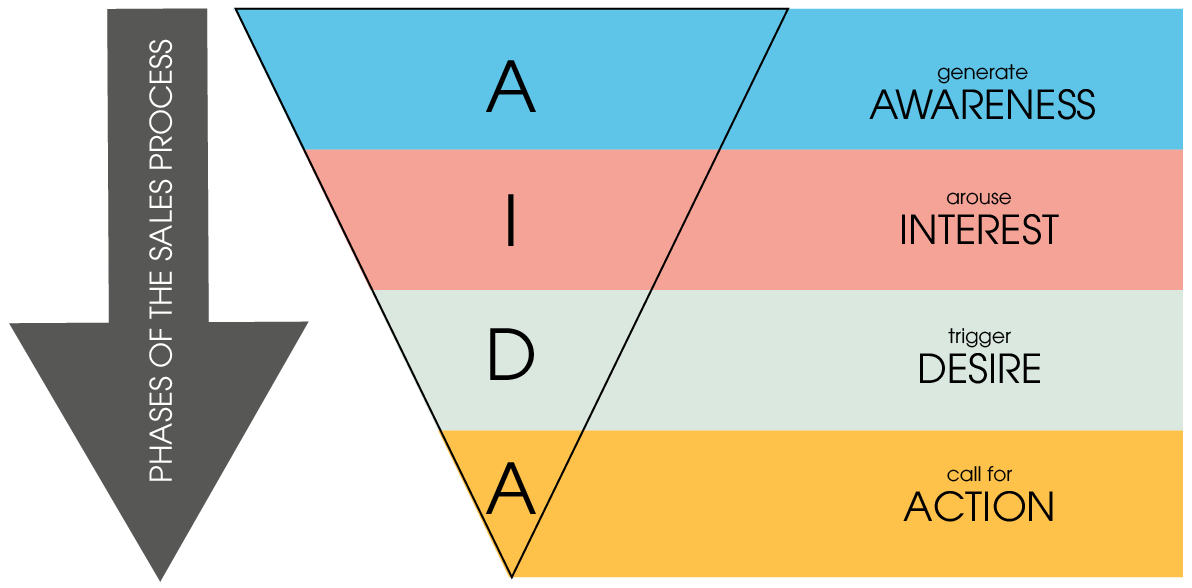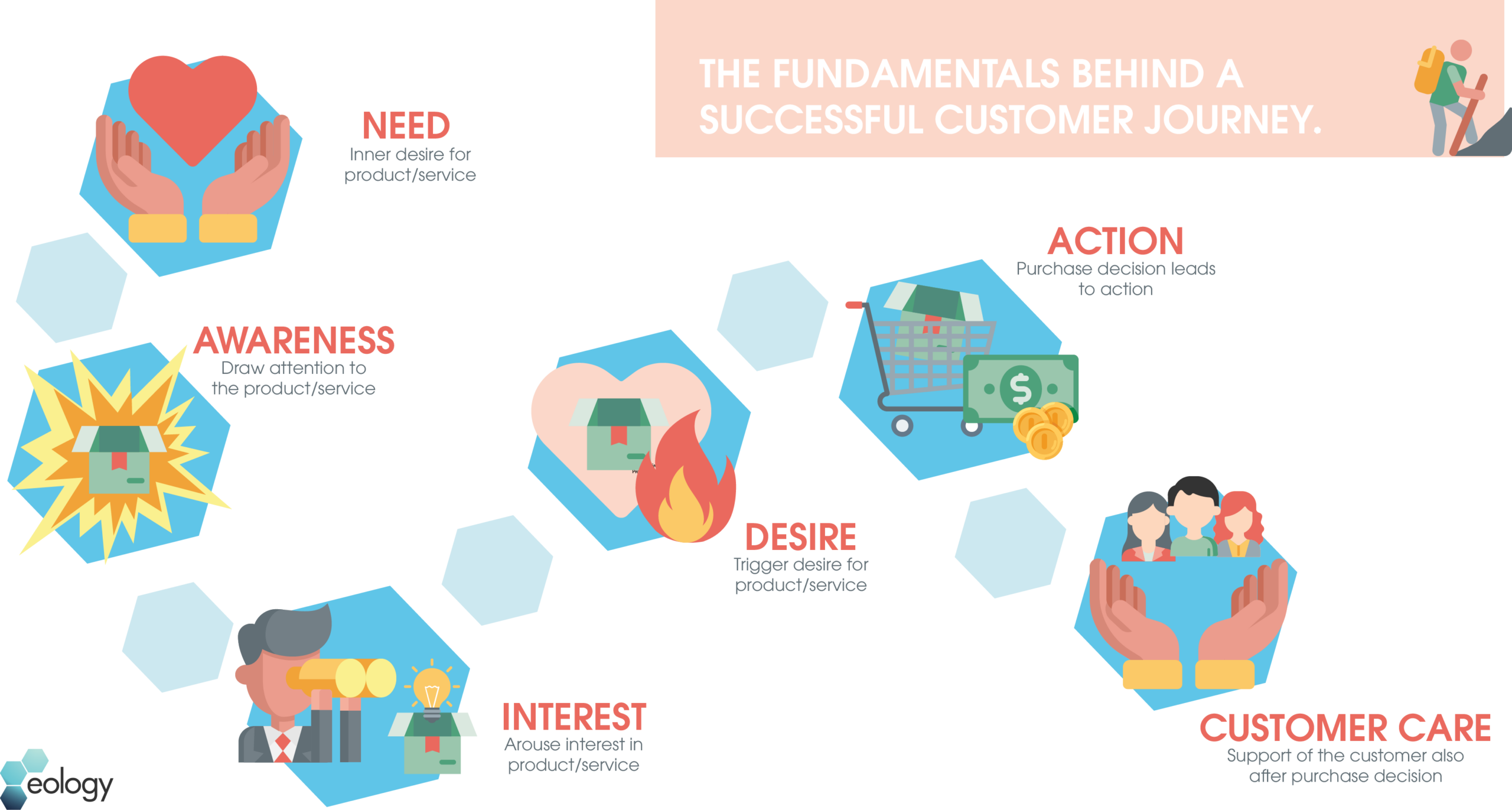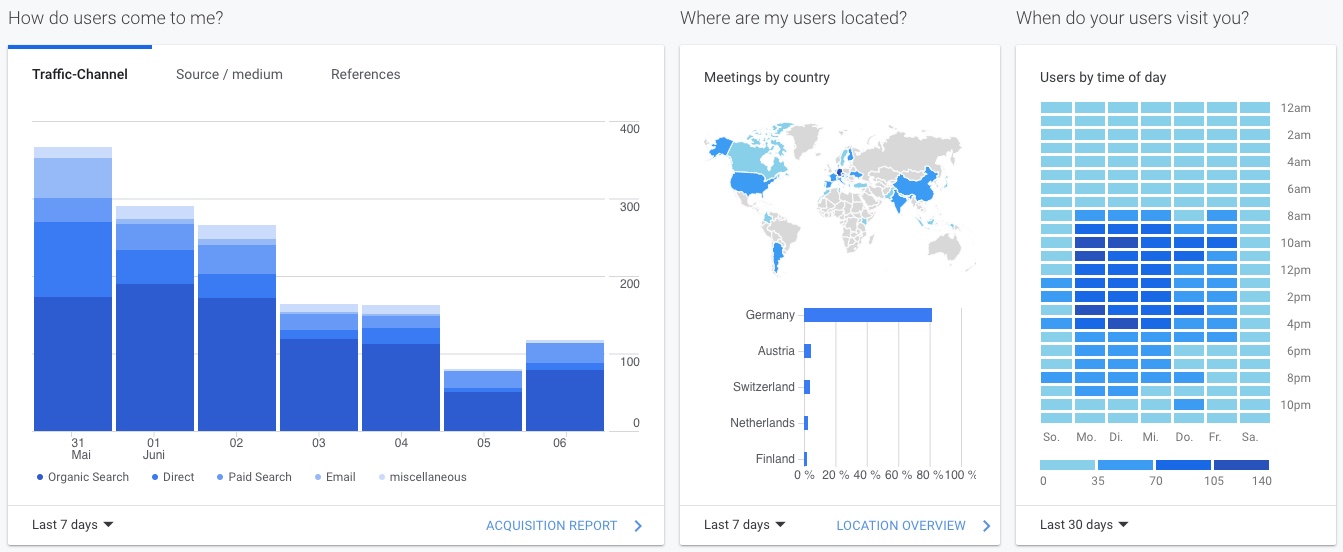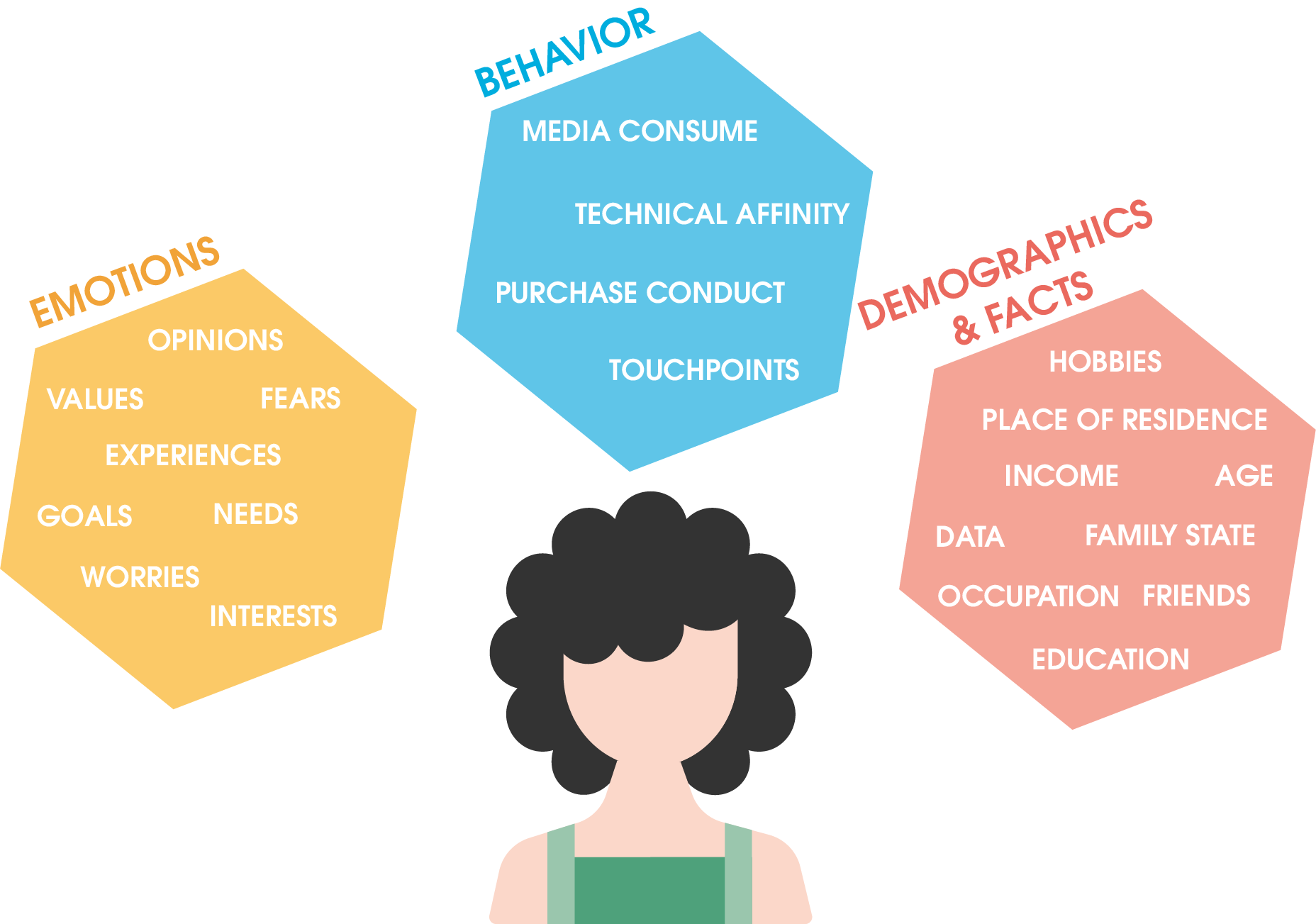
Google Alerts is a useful tool that helps you keep up to date with all the topics that interest you. Learn how to use this tool, how to use it correctly and how to get the most out of it here! ... Continue reading
| 12 min |


| 20 min |
What is a customer journey?
Why do you need a customer journey?
The individual phases of the customer journey
How personas help you create the perfect customer journey
Touchpoints are essential for a customer journey
The customer journey map
Customer journey management
Excursus: Customer journey and B2B
These are the mistakes you should avoid
Conclusion
Customer journey can be referred to as buyer’s journey or user journey. This marketing term describes the individual steps that a potential customer goes through on his or her journey through the internet before ultimately deciding to purchase a product or service from a specific company. In addition, companies use the customer journey to influence what the future relationship between them as a provider and their customers will look like.
The customer journey is divided into different phases, recording various touchpoints between the customer and a brand or service. This is all recorded in a customer journey map, which serves as a visualization for the course of this journey.
The duration of each customer’s customer journey varies greatly. It can take place in a matter of minutes, and sometimes it can even take weeks or months. Most of the time it depends on the target group, the number of touchpoints, the complexity and the price of the purchase item. Sometimes it is different personal reasons of an individual buyer that cause the desired target action to take longer time.
A customer journey is important because a potential customer does not usually make a purchase decision immediately when he or she learns about a product or service. Often it takes various and frequent touchpoints between the customer and the product to convince him or her to buy. This is exactly where the customer journey comes in. After the first point of contact with the customer, it repeatedly finds new contact opportunities that ensure that a need is awakened and ultimately trigger a purchase. These can take place both online and offline. The goal of all this is a long-term customer relationship, which is created because the customer has perceived the entire customer journey as something sustainably positive.
You need a customer journey to know the customer’s needs and thus convince a potential customer of your company and win him over as a buyer. In addition, it should improve the customer experience in such a way that a long-term relationship is created.
A customer journey includes various steps that the customer goes through before deciding to make a purchase. It can be divided into three phases:
These phases are always fixed. However, the individual steps can vary depending on the product or service. For some, a customer journey is completed quickly, while other products require much more time before the customer makes the purchase decision. A foundation of the customer journey can be described using the four-step AIDA model:

Even though there are numerous other models that can form the basis of the customer journey, the AIDA method helps in principle to describe a customer journey and thus to convince a potential customer to buy a product or service. Often, the entire process is much more detailed, which is why the individual steps can be subdivided even further. Many customer journeys thus build on the phases of the sales process – the AIDA model could therefore be described as a preliminary stage of the customer journey. However, this model alone is not sufficient, as the complete period after the purchase decision is not taken into account. But it is precisely these phases that are important if you want to build a long-term customer relationship. Here, the keyword regular customer care becomes significant. This ensures that customers feel cared for even after the purchase, what builds a positive user experience. Therefore, they are happy to be loyal buyers in your company in the long term. The AIDA model also does not take into account the customer’s inner desire (“need”) for a product or service, even though this is a basic prerequisite for wanting to buy something in the first place. In addition, this desire is relevant for directing the customer’s attention in a targeted manner. The AIDA model would therefore have to be extended by a few stages to form a perfect basis for the customer journey.

Two important building blocks help you to successfully design the customer journey:
Before you develop the customer journey, you use persona to clarify who is actually embarking on this journey. Persona is a virtual character with specific characteristics and features. This fictitious character describes the target group or the existing or potential customer. This should help you to better imagine the customer’s needs and thus to react to them in the right way.
But be careful: Persona should not represent the absolute ideal customer. They should rather be used to achieve an average representation of the entire target group. Only in this way can you identify your own weak points with regard to the product and the planned customer journey, because an absolute ideal customer would naturally have nothing to complain about. It also helps you to identify relevant contact points. This helps you to actively shape the customer journey in a targeted manner.
Use ready-made personas and use them for a target group analysis to gain further insights into your target group.
There are five simple steps that will help you develop a successful persona profile:

The first step is to perform a detailed analysis of the existing (internal and external) data. Check them for any commonalities that are characteristic of your target audience. For this you can use your internal CRM-System (customer relationship management system). Through the stored CRM data you can gain first insights about your target group. You can usually analyze the following data relatively easily via your CRM:
If your CRM does not contain enough data, you can also use external web analysis tools. These help you to generate further data. An essential tool that can help you here is Google Analytics. Here you can gain further information about your website visitors. For example, you can find out,

With the help of Google Analytics, you can generate much more information. For example, you can get insights into:
There are also tools that can help you find other interesting data about your customers that can be used for your persona. It’s also helpful to analyze customer feedback and online reviews. This will give you further insight into the needs of your target group. Reviews of your competitors can be interesting for this, so you can find out where you can optimize.
Your persona description can include information from three areas:

The next step is to conduct a kind of persona workshop. Here, the insights already gained are discussed in a team of the company. These should bring experience and knowledge from a wide range of areas, so that each of them can make a relevant contribution to the persona profile.
After the workshop, the next step is to combine the results. To do this, you combine the collected facts from your data analysis and the insights gained from the workshop. Now you already have the first raw form of your persona description.
Following this, you send your fictitious persona into a field check. This will give you more insights of potential customers to add to the persona profile. To do this, ask participants about the following topics:

When you work with Persona in your customer journey, it creates clear advantages:
Let’s move on to the second cornerstone of the customer journey and first clarify the following question: “What is a touchpoint anyway?“ – Touchpoints are all the places a (potential) customer may have with the company, brand, products, services or employees. These can take place in the real world as well as in the virtual. You can divide the latter into “social” and “mobile” because there are a lot of contact points digitally.

Touchpoints can take three different forms:
In the following, we would like to deal primarily with virtual contact points. You can find these distributed throughout the internet. There are very different touchpoints in each phase of the customer journey. Therefore, in the best case, the potential customer comes into contact with some of them in the course of his customer journey. However, keep in mind that the customer gains an impression about your company with each touchpoint. This should be consistently positive, so that they remember their experience with you well. Otherwise, he may break off the customer journey and decide to buy from another company. Customer impressions can be cognitive and emotional, consequently referring to information or to feelings they develop in connection with the corresponding point of contact. The emotional experience of a customer is called the brand experience. Thus, it is extremely important that you know all your touchpoints in order to perfectly pick up customers there.
Look out for three distinct moments where customers can come into contact with your business:

A successful customer journey is the key to winning consumers as customers of your company. To build up a customer journey optimally, the foundation should be right. In this context, you should not only think about the various steps up to the purchase decision, but also keep an eye on the relationship after the purchase is completed. Good customer care helps you to build up a long-term and stable customer relationship. In addition, a clearly defined persona helps you to narrow down your target group in the best possible way. This way, you can better adapt to possible events and problems in the course of the customer journey. If you have also thought about suitable touchpoints through which you want to address your customers, there is nothing standing in the way of a good customer journey!
A customer journey map helps you to visually depict your customers’ journey. In it, you record all the steps a customer takes on his or her customer journey. This gives you the chance to better analyze their individual journey. It helps you to identify positive and negative moments and to compensate for problem areas. With the help of a customer journey map, you can better put yourself in the customer’s shoes and ultimately optimize the customer journey and customer experience.
The customer journey map consists of two axes – a horizontal and a vertical one. These are intended to represent the usual linear progression in which a customer journey takes place. The horizontal axis therefore shows the individual steps that a customer goes through during the customer journey. It depicts everything: the need to have a product, the purchase and any exchange actions or complaints – consequently the complete customer care in the aftermath. Here it is important to really go into detail about the individual steps. This way, you can identify where exactly problems could arise. On the vertical axis, on the other hand, you will find individual levels of analysis. These can be the following:
This matrix allows you to see in detail what the customer experiences at which stage of the customer journey. This makes it easier for you to optimize organizational processes with regard to the customer journey.

You can also download the template here.
The customer journey also has limitations. This is the case when connections between the individual steps become unclear. If you can’t analyze in retrospect exactly which step led to the purchase or to the jump, it becomes difficult to judge which measure was most effective or where optimization should be made.
During the customer journey, it’s important that you don’t lose sight of your customers’ needs. That’s why you require an overarching concept, the customer journey management, to focus on your customers not to lose. Their needs and wants to differ and depend on their personalities. For this reason, it is essential to respond individually to customers. Not everyone feels ideally addressed via social media, for example. For some, the website, an email, or advertising on the search or display network might be the better way. It is therefore significant to keep an overview of all digital touchpoints and to weigh up what you can use in a customer-oriented and targeted way. Therefore, ask yourself:
Have you thought about these points, you will succeed effortlessly to develop your customer journey efficiently and successfully and to assert yourself against the competition.
Consider whether or where you want to place touchpoints in the real world. These are also part of your customer journey management.
There are clear differences between B2C and B2B. These impact the customer journey.
B2C | B2B | |
|---|---|---|
CUSTOMERS | Individual, private buyers | Companies in which different, responsible employees make purchasing decisions |
PURCHASING DECISION | Driven by emotions and certain desire to buy | Rational, usually very well considered and logically thought out |
CUSTOMER RELATIONSHIP | Relationship from the customer to the company is built up rather rarely | – Comprehensive support and close business relationship
– Very time consuming |
DURATION | Mostly designed for the short term | Mostly years of commitment |
An excerpt of the differences between B2B and B2B customers
The biggest difference is probably that B2B customers rarely make a decision “just like that.” Rather, they have a well-considered process involving much research in advance. Another important difference is that rarely one person alone makes the decision. Often it is a whole team of employees of the company. In B2B, it is therefore necessary to pick up several people at the same time and to convince them of your product or service via the customer journey. In this case, this also means that you will probably need different touchpoints, since each decision-maker behaves individually and they all obtain information from different sources. Since customer relationships in the B2B environment are enduring and long-term in nature, nurturing this bond is extremely important. Comprehensive after-sales support is therefore fundamental to maintaining the customer relationship.
There are some classic mistakes that ensure a customer journey is not as successful as business owners would like. Problems are often caused by inconsistency of sales channels and touchpoints. Examples include:
Often the problem is that companies have not analyzed their customers properly or sufficiently. They simply do not know them well enough to develop a successful customer journey. Not infrequently, this is due to a lack of data in their own CRM. It is therefore essential to collect as much information as possible about your customers in order to get to know them better. Otherwise, potential customers will not build trust with the company, so that a long-term relationship is not possible.
In summary, it should be emphasized once again how important it is to know your customer well. In addition, he should come into contact with your company frequently, but not so often that he feels bothered by it. He should be picked up in every phase of the costumer journey, only then he is convinced of brand and product. This in turn means that they will recommend your company to other potential customers. Experience reports and ratings are nowadays the be-all and end-all when it comes to convincing consumers of products and services. One could almost say, recommendation marketing weights partly far more heavily than alternative marketing measures.
Want to learn how to implement the customer journey in your content strategy?



